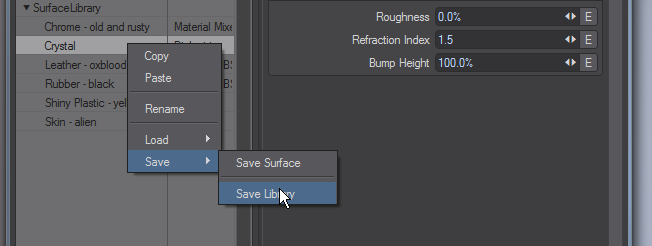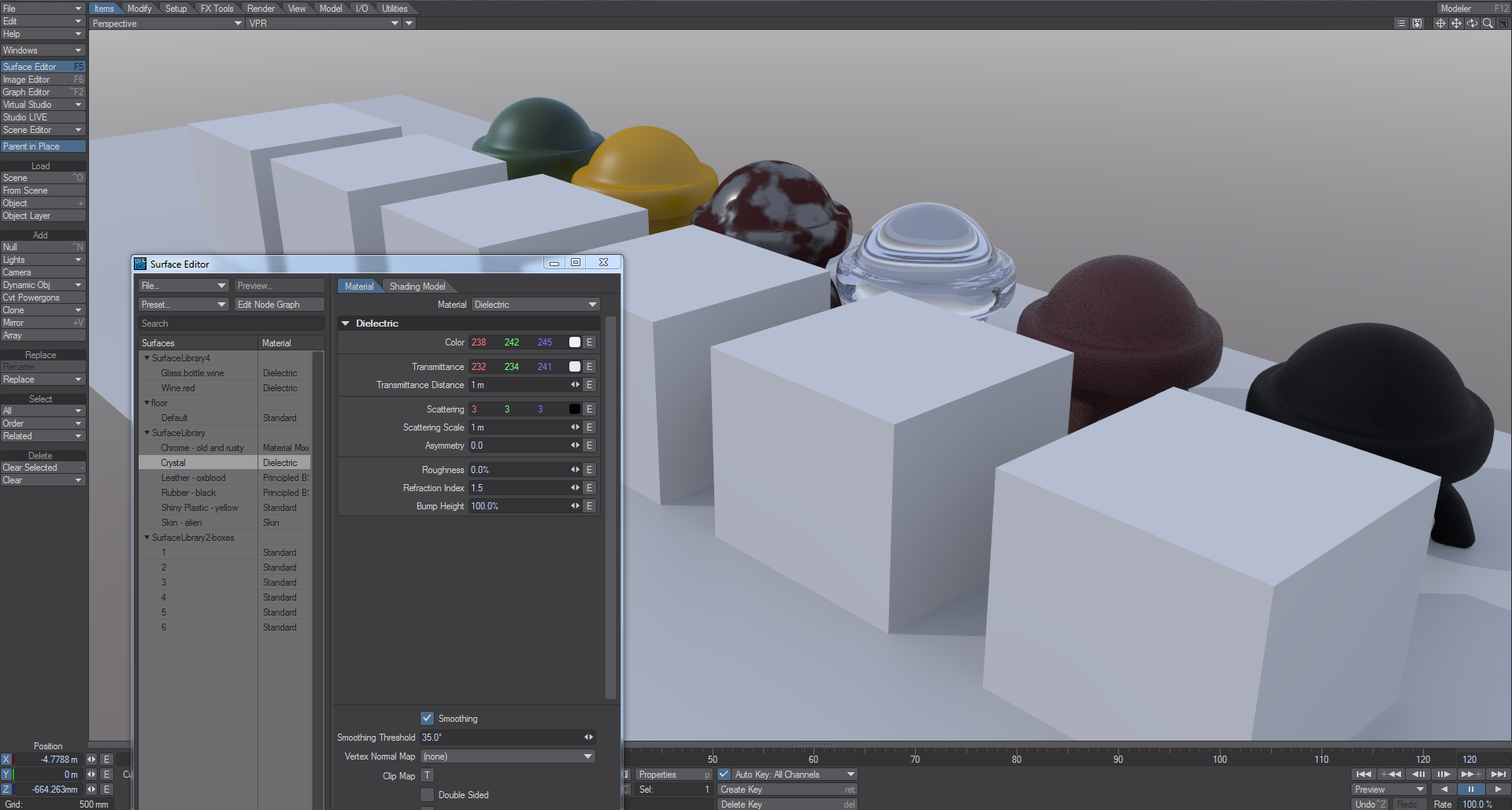Example - Surface Library
You can set up a set of default surfaces and load them to objects. Since you append to libraries rather than overwriting you can start with a single surface. Create a simple object with a surface that describes what function it is performing - Plastic.black.shiny, for example or Glass.bottle.wine - and surface it appropriately.
With our Glass.bottle.wine and Wine.red surfaces established, we can start a surface library. To do so, right click on the object in the Surface Editor, or either of its surfaces and choose Save > Save Library. This will save all the surfaces for the object to a new file with the extension .lib. A library with two surfaces isn't very useful however, so let's add more.
With our new object with its varied surfaces loaded, right click on one of its surface names and choose Save Library again.
Save to the same name as before. You will be warned that the file will be overwritten, but it will be appended with the new surfaces. With eight surfaces in our library we can start to make use of them.
We'll add a fresh, unsurfaced set of example objects to our scene. For the moment we won't name the surfaces specially, they should just be different for each object - 1, 2, 3, etc. will do for the time being.
We can load our library to these untextured objects by right-clicking on one of the numbered surfaces and choosing Load Library by Index.
As you can see, our wine bottle and wine surfaces have come in (the second and third cubes) along with some of the others. To be sure you can load the appropriate surface to the object you want you need to use Load Library by Name. If we reload the boxes object so we are back to the unsurfaced objects, then we can do that.
From my surface test objects, I want to use the Leather - oxblood surface. Right click on the original surface and choose Rename. Copy the selected name and add a 2 to the end (because even though they are separate surfaces they need unique name for the sake of this exercise). Choose one of the unsurfaced blocks and rename that too. Paste the copied name in so that the surface is now called Leather - oxblood instead of the number.
Once done, right click on the newly-renamed surface and Load Library by Name. You will see that only the surface you changed will have been loaded from the library.
There is another entry on the Load Library menu. It is Load Library by Name, Append extra surfaces. This allows you to load all the surfaces in your library and copy and paste to other surfaces, which can be quicker than renaming surfaces.
Advantages over surface presets
Surface presets are excellent in that they give you a thumbnail to see what a surface will give, but this system is far more efficient when it comes to replacing multiple surfaces at once. If you create car models for instance, you will be guaranteed to need bodywork, chrome, glass and rubber surfaces. If you save your surfaces with precise names as a library it can be used to rapidly surface objects without needing to load individual presets and accepting the warning message a preset gives.






